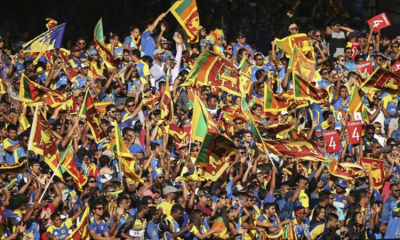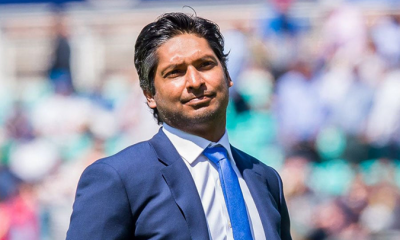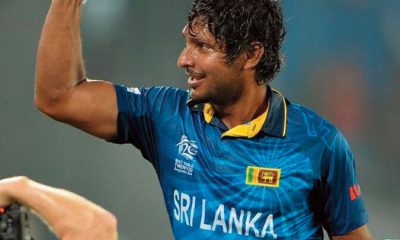Sports
How home teams are thriving in ICC Men’s Cricket World Cups
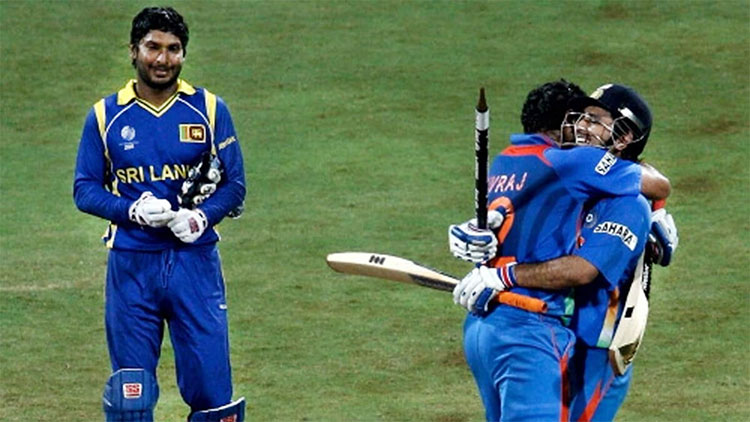
Pressure or advantage? The conundrum that faces the hosts of each ICC Men’s Cricket World Cup.
If the last three editions are anything to go by, it is an advantage to be playing at home.
But, up until the 2011 edition, only one team had ever won as hosts, and that was Sri Lanka in 1996 when they co-hosted with India and Pakistan.
Even then, they only played two games at home, winning the final in Lahore.
Since 2011, a home team has triumphed every time with India setting the trend which Australia and, most recently, England followed.
Each team had unique challenges to face en route to the trophy, but what worked for the home teams?
2011:
India’s legends lead them home
Legends were made, celebrated, and inspired at the ICC Men’s Cricket World Cup 2011.
The final on 2 April was the most memorable day for the great Sachin Tendulkar as he was finally part of a World Cup-winning squad.
He made only 18 runs in the showpiece, but he had stewarded India there with a Player-of-the-Match- performance in the semi-final against Pakistan.
Yuvraj Singh had also done his job, winning Player of the Tournament after piling up 362 runs and 15 wickets, doing so without knowing he was suffering from cancer.
Each player was facing a personal Everest as well as the collective one of attempting to win a World Cup under what felt like insurmountable pressure.
To prepare, they spoke with Mike Horn, an adventurer who became the first person to solo circumnavigate the Equator, who put into perspective the challenge ahead of them.
The first challenge they faced was opening the tournament against Bangladesh, Virender Sehwag began with a boundary and that is how the tournament ended – MS Dhoni hit the winning six in the final against Sri Lanka.
The captain had moved himself above usual No.5 Singh, the change paying off as he then compiled 91 runs from 79 balls to see India to a second title and send the nation into ecstasy.
Doing so, the pressure was released and the curse of the hosts winning on home soil was broken.
2015:
Australia surge to fifth trophy
The most successful team in the competition’s history, Australia were never going to be able to fly under the radar, and their performances in 2015 certainly caught the eye.
The World Cup started on a positive note when they beat their old rivals England by 111 runs at the MCG.
But spirits were dampened by a washout against Bangladesh before New Zealand took a low-scoring thriller at Eden Park, winning by just one wicket.
And hell hath no fury like an Aussie team beaten.
Michael Clarke’s men responded by putting on the highest score at a World Cup, crashing 417 against Afghanistan in a 275-run win.
Comfortable defeats of Sri Lanka and Scotland followed before Australia brushed aside Pakistan and India in the knockouts.
The latter became the sixth team to be bowled out by Australia in the tournament as they were reduced to 233 runs, 96 short of their target.
The same fate befell New Zealand in the final in Melbourne as they were all out for 183 which Australia chased down with 101 balls to spare.
The experience of previous wins outweighed the pressure of home expectations, not something England could say four years later.
2019:
Four years in the making
England had never won the ICC Men’s Cricket World Cup before and had been burned by a disastrous campaign in 2015.
But from the ashes grew new life, as captain Eoin Morgan led a rebuild with one aim, to win the World Cup on home soil.
There was time for beauty amid the ruthlessness, Ben Stokes’ stunning catch in the opener against South Africa firing up the tournament.
Morgan broke records as he blasted the most sixes in an innings against Afghanistan before Australia were blown away in the semi-finals.
The final at Lord’s was not about beauty or ruthlessness but as England attempted to do what had previously been impossible for them, they simply just needed to be in the contest.
The game ebbed and flowed as any good one-day match should before reaching a crescendo with a Super Over.
It almost had to be like this, the team who had set out to revolutionize the game, winning the World Cup in a way it had never been won before.
Now the tournament returns to the place where the trend started, and with India acting as solo hosts for the first time, all eyes will truly be on them.
But as 2011 showed, that is how they like it.
Sports
PM Modi meets Sri Lankan cricket stars who lifted the Cricket World Cup in 1996
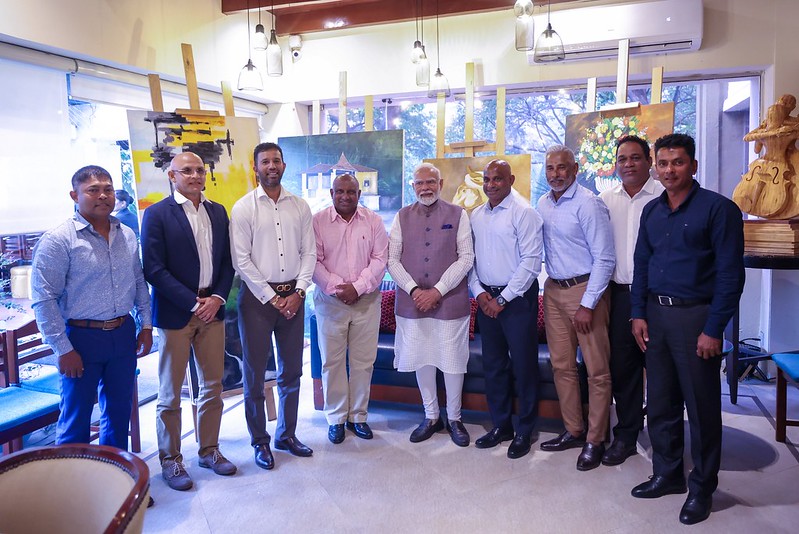
Indian Prime Minister Shri Narendra Modi who is on a three day state visit to Sri Lanka met with the Sri Lankan cricketers who lifted the Cricket World Cup in 1996.
Latest News
IPL 2025: Archer, Sandeep and batters’ fire to hand Punjab Kings first loss
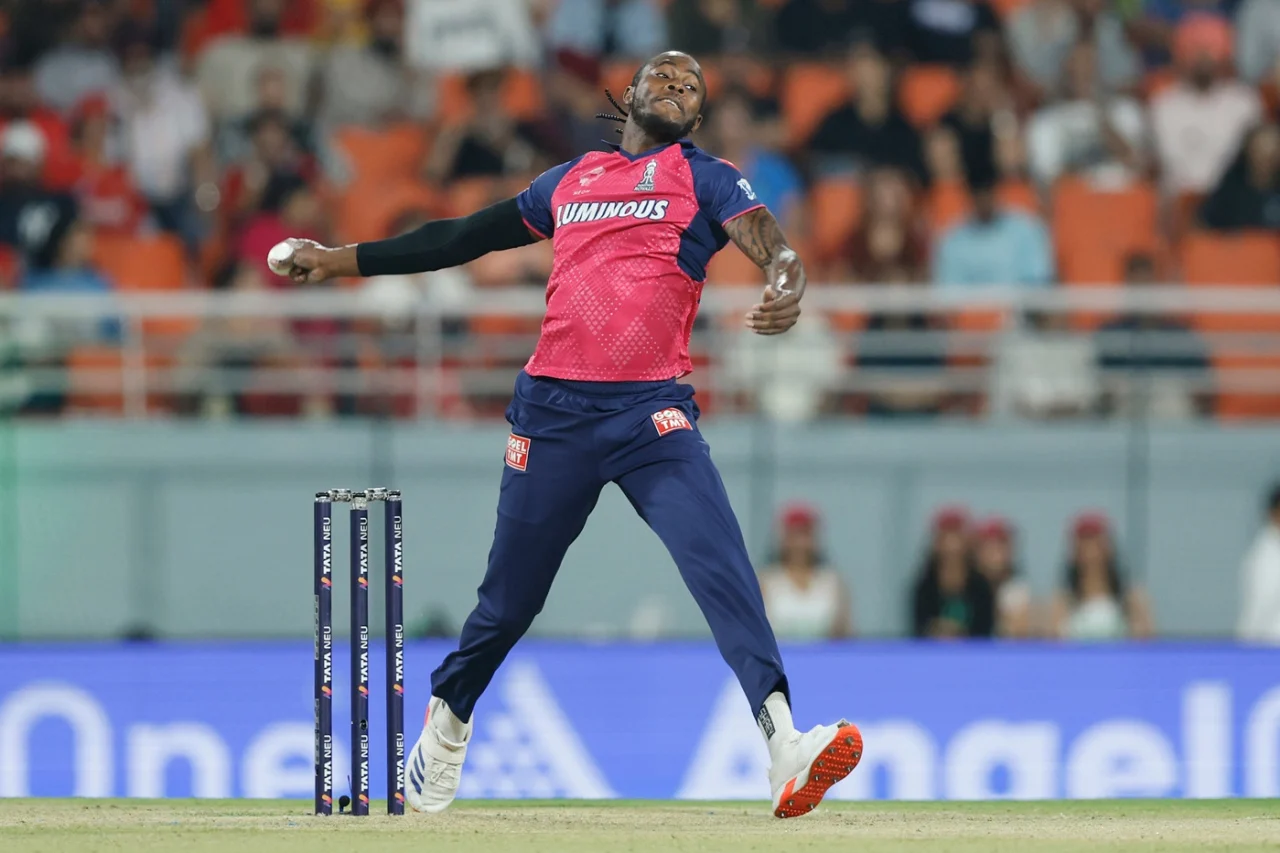
Yashaswi Jaiswal scoring runs. Jofra Archer continuing the rhythm he seemed to rediscover against Chennai Super Kings (CSK). Maheesh Theekshana and Wanidu Hasaranga coming into their own.
All these things may have been on Rajasthan Royals’ (RR) wishlist coming into Saturday night’s match against Punjab Kings (PBKS). All three wishes were fulfilled, as RR consigned PBKS, playing their first home game of IPL 2025, to their first defeat of the season.
Jaiswal and Riyan Parag provided the sparks at the start and finish for RR to become the first team to post a 200-plus IPL total in Mullanpur. With this only being the sixth IPL game at the venue, it wasn’t yet clear if 205 was a winning total, but only until Archer made his entrance.
Six legal balls into their chase, PBKS were two down, with Archer finding movement at upwards of 145kph to take out Priyansh and Shreyas Iyer. RR struck two more blows in the first seven overs, and PBKS were always playing catch-up thereafter, even when Nehal Wadhera and Glenn Maxwell added 88 for the fifth wicket.
Theekshana and Hasaranga did their bit to stifle the partnership’s scoring rate, and then struck one after the other to remove both set batters. And that was that for PBKS; they only hit one boundary in the last 5.4 overs as RR wrapped up victory by 50 runs.
Jaiswal got off to a scratchy start, slashing and missing against the left-left new-ball pair of Arshdeep Singh and Marco Jansen, who both found early swing, miscuing a pull just beyond the reach of a backtracking mid-on, and scoring just 12 off his first 14 balls.
But perhaps all he needed, after starting his season with scores of 1, 29 and 4, was a bit of time in the middle and a bit of luck. The fourth over brought him back-to-back sixes off Jansen – a ramp over the keeper and a slog over midwicket – and he seemed to be up and running.
Sanju Samson, captaining RR for the first time this season after a finger injury had restricted him to a batting-only Impact Player role thus far, began more fluently but had less of the strike early on. When RR ended their first wicketless powerplay of the season on 53 for 0, he was on 20 off 14 and Jaiswal on 32 off 22.
From 40 for 0 after four overs, RR only scored 45 in their next six. The legspin of RR old boy Yuzvendra Chahal and the slower cutters of Lockie Ferguson and Marcus Stoinis had a lot to do with this, on a pitch that was just a touch grippy and two-paced.
Samson fell in the 11th over, trying to force the pace against Ferguson, and Jaiswal seemed to be getting stuck. But from 46 off 39, he found that elusive higher gear, crunching Chahal down the ground to bring up his fifty before slog-sweeping his next ball for six. He hit Stoinis for a six and a four in the next over – the 13th – before becoming Ferguson’s second victim, swinging too early at a well-disguised, stump-bound knuckleball.
Parag, batting at No. 3, began much like Jaiswal had done, struggling initially to get to grips with the surface. At one stage, after four successive dots against Arshdeep’s cutter, angling across the right-hander and turning further away, Parag was on 12 off 14 in the 16th over.
Then he paused for breath, and took strike transformed, a batter able to hold his shape for a split-second longer. He hit the next two balls from Arshdeep for fours, and that began a hitting spree that brought him 31 off his last 11 balls at the crease. With Nitish Rana, Shimron Hetmyer and Dhruv Jurel contributing cameos as well, RR rushed past 200 in the final over. Stoinis, whose first two only went for 12, leaked 36 in his last two, which again told the tale of RR’s batters coming to grips with the conditions and finding a way to master them.
The first ball Archer bowled could not have been bettered. Perfect length, rooting Impact Sub Priyanash Arya to the crease. Movement from leg to off, at 144.6kph. The left-handed Arya defended down the wrong line and the ball slid past his outside edge to flick the top of off.
None of this seemed to make any impact on Shreyas Iyer, though. The PBKS captain began in a manner befitting someone whose head coach had likened his previous innings to a purring Rolls Royce, stroking Archer for two fours through the covers in his first four legal balls at the crease. Then he got greedy, exposing all his stumps to try and make room for another off-side hit, and Archer burst a 148.6kph ball through him.
Wickets kept falling even when Archer didn’t have the ball. Stoinis popped a return catch to Sandeep Sharma off a fairly innocuous seam-up delivery in the fourth over, and Prabhsimran Singh slog-swept Kumar Kartikeya to deep midwicket in the seventh. The required rate kept mounting too; PBKS needed 163 from 82 balls when Maxwell joined Wadhera.
PBKS’ hopes began to stir when both batters hit sixes off Kartikeya in a 19-run 10th over, but Theekshana and Hasaranga immediately got to work, conceding just five and 12 – the latter an impressive recovery after Wadhera slog-swept the first ball of the over for six – in the 11th and 12th overs.
But as Maxwell ramped and reverse-swatted Yudhvir Singh for a pair of fours in the 13th, Wadhera launched Hasaranga for a straight six to bring up a 33-ball fifty in the 14th, and then began the 15th with back-to-back fours off Theekshana, PBKS began to dream once again.
Then the two Sri Lankan spinners brought their defensive skills to the fore again, asking the batters to try and fetch balls dangled wide of their hitting arcs. Maxwell sliced a catch to long-off at the end of the 15th over, and Wadhera slog-swept to deep midwicket at the start of the 16th. PBKS were six down and needed 75 off 29. It was never going to happen as they continued to lose wickets.
Brief scores:
Rajasthan Royals 205 for 4 in 20 overs (Yashaswi Jaiswal 67, Riyan Parag 43*, Sanju Samson 38, Nitish Rana 12, Shimron Hetmyer 20, Dhruv Jurel 13*;Lockie Ferguson 2-37, Arshdeep Singh 1-35, Marco Jansen 1-45) beat Punjab Kings 155 for 9 in 20 overs (Prabhsimran Singh 17, Shreyas Iyer 10, Nehal Wadhera 62, Glenn Maxwell 30, Shashnak Singh 10*; Jofra Archer 3-25, Sandeep Sharma 2-21, Maheesh Theekshana 2-26, Kumar Kartikeya 1-21, Wanidu Hasaranga 1-36) by 50 runs
[Cricinfo]
Latest News
KL Rahul shines as Delhi Capitals outclass CSK in Chennai

Chennai Super Kings are starting to lose control of their fortress. For the second time this season, a visiting team that hadn’t tasted victory against them at Chepauk in 15 years was able to utterly dominate them. This resulted in the strangest situation. The crowd here bays for MS Dhoni to come out and bat. They cheer their own team’s wickets in anticipation of his arrival. Well, on Saturday, he was there in the 11th over, but there was only silence.
In the absence of Faf du Plessis, who was not quite fit to play, KL Rahul opened the batting. He needed a little time to get used to the pace of a pitch that was very dry and therefore prevented the ball from coming into the bat. He was 25 off his first 20 balls.
Rahul found release through Noor Ahmad. He took IPL 2025’s highest wicket-taker for 20 off 9 but this wasn’t crash, bang, wallop. The bowler missed his mark a couple of times and the batter was confident enough in both his ability and his method to take full toll.
Noor strayed too full once and Rahul hit the half-volley for four. He pulled his length back once, but offered room to free the arms and Rahul swept him hard for six. Sometimes against spinners who are hard to pick out of the hand, the horizontal bat shots work so long as you pick the length.
This was how from 25 off 20 balls, Rahul hit 36 off 18, which included a reverse scoop off Mukesh Choudhary, the only bowler he actually targeted. Mukesh conceded 40% of the boundaries that DC hit.
Even towards the end of Rahul’s innings, it was apparent that hitting out was becoming difficult. He only scored 16 off his last 13 balls. DC understood that. Mukesh Kumar got one to stick in the surface and drew a leading edge from Rachin Ravindra. Ruturaj Gaikwad timed the pants off a Mitchell Starc short ball but didn’t quite place it well enough. He threw his head back as soon as Jake Fraser-McGurk took the catch at deep backward square leg. CSK were 20 for 2 in the third over. It had been six years since. they’ve been able to chase a total over 180 in the IPL. This was not the start they wanted.
Vijay Shankar had only one boundary from his first 31 deliveries. In that time, he could’ve been dismissed lbw or run-out. He survived both calls and tried as hard as he could to make the most of them, but it just wouldn’t come off. DC were so good in denying him the freedom of his arms. The pitch being slow as well didn’t let him get away with the connections that he made. More than once, he grimaced through an innings that brought him 69 runs in 54 balls. DC attempted to find the boundary off 37 balls and succeeded 21 times. CSK actually went harder – they hit out against 38 balls but were only successful 12 times. DC’s bowlers harnessed a slow, turning pitch beautifully. They out CSK-ed CSK. Winning the toss and batting first helped.
In the last match, Stephen Fleming said Dhoni cannot bat for a long time and therefore they ration his appearances. That’s why he batted at No. 9 against Royal Challengers Bengaluru because there was no point in him coming any earlier.
This time they had no choice. Half the side was in the hut with only 10.4 overs on the board. Kuldeep Yadav had delivered a killer googly to Ravindra Jadeja. The batter did not read it. He wasn’t even allowed the chance to pick it off the pitch. The length was so perfect, bringing him forward and then turning the wrong way to hit his pad instead of his flailing blade.
That brought Dhoni to the crease. He’s won World Cups before. But this might have been the first time he was batting in front of his parents. They were at the ground, to watch him score 30 off 26 and his team lose by 25 runs. It was a difficult evening for CSK fans. Their chances of winning, according to ESPNcricinfo’s Forecaster, was down at 9.51% even before the chase was halfway through. Jadeja is yet to bowl his full quota of overs in four matches. Ashwin has done so only twice. CSK have hit the fewest sixes in IPL 2025. Their middle order (4-7) is struggling badly, averaging 21.76 (third-lowest in the tournament) and striking at 116.94 [lowest].
Brief scores:
Delhi Capitals 183 for 6 in 20 overs (KL Rahul 77, Abhishek Poral 33, Axar Patel 21, Sameer Rizvi 20, Tristan Stubbs 24*; Khaleel Ahmed 2-25, Ravindra Jadeja 1-19, Noor Ahmad 1-36, Matheesha Pathirana 1-31) beat Chennai Super Kings 158 for 5 in 20 overs (Vijay Shankar 69*, Devon Conway 13, Shivam Dube 18, MS Dhoni 30*; Mitchell Starc 1-27, Mukesh Kumar 1-36, Vipraj Nigam 2-27, Kuldeep Yadav 1-30) by 25 runs
[Cricinfo]
-

 Business2 days ago
Business2 days agoDaraz Sri Lanka ushers in the New Year with 4.4 Avurudu Wasi Pro Max – Sri Lanka’s biggest online Avurudu sale
-

 News7 days ago
News7 days agoBid to include genocide allegation against Sri Lanka in Canada’s school curriculum thwarted
-

 Business3 days ago
Business3 days agoStrengthening SDG integration into provincial planning and development process
-

 Features20 hours ago
Features20 hours agoStarlink in the Global South
-

 Business2 days ago
Business2 days agoNew SL Sovereign Bonds win foreign investor confidence
-

 Sports4 days ago
Sports4 days agoTo play or not to play is Richmond’s decision
-

 Features20 hours ago
Features20 hours agoModi’s Sri Lanka Sojourn
-

 Latest News6 days ago
Latest News6 days agoIPL 2025: Rookies Ashwani and Rickelton lead Mumbai Indians to first win


